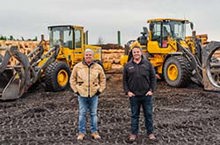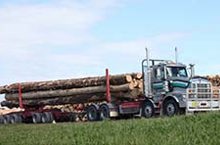
A fungus discovered in 2020 can process wood and agricultural waste more effectively than traditional commercial enzymes – helping transition forestry into a high-value manufacturing sector, according to new Bioeconomy Science Institute research.
The fungus, Penicillium rotoruae, was discovered as a new species growing on radiata pine in the “timber graveyard” at Scion – now part of the Bioeconomy Science Institute – and named after Rotorua. By producing natural enzymes that can easily break down the complex sugars in softwood, it can efficiently transform low-value wood waste into fermentable sugars.
This, project leader Dr Alankar Vaidya says, could help produce sustainable green fuels, chemicals, biomaterials and bioproducts that will strengthen New Zealand’s circular bioeconomy while cutting reliance on fossil resources.
“This would support forest-based economies and bio industrial clusters by adding value to existing resources, which could enhance regional sustainability. It could also disrupt the industrial biorefining market, which relies on expensive commercial enzyme cocktails to process wood and agricultural waste.
“Softwood such as radiata pine is a major renewable resource but notoriously difficult to process due to resistant cell wall structures. This breakthrough will speed up and enhance the productivity of enzymatic hydrolysis* – traditionally a bottleneck in biorefinery processing – to make wood conversion cleaner and cheaper.
“Natural enzyme blends from the new fungus can replace or complement costly commercial enzyme formulations, reducing feedstock conversion costs.
“Faster and more complete hydrolysis of softwood translates directly to increased yields of fermentable sugars – which are critical inputs for bioethanol, bioplastics and bio-based chemicals.
“This study will be really helpful as a long-term cross-disciplinarity example for researchers across the Bioeconomy Science Institute, as well as other institutions in New Zealand and overseas.
“It presents valuable intellectual property potential for biotechnology companies, aligning with New Zealand’s strategy to monetise indigenous biological assets in sustainable innovation.”
Penicillium rotoruae is the first fungi in Rotorua that's been publicly named after the city.
* Enzymatic hydrolysis is a biochemical process where enzymes use a catalyst to break down large molecules into smaller ones, such as proteins into amino acids.










